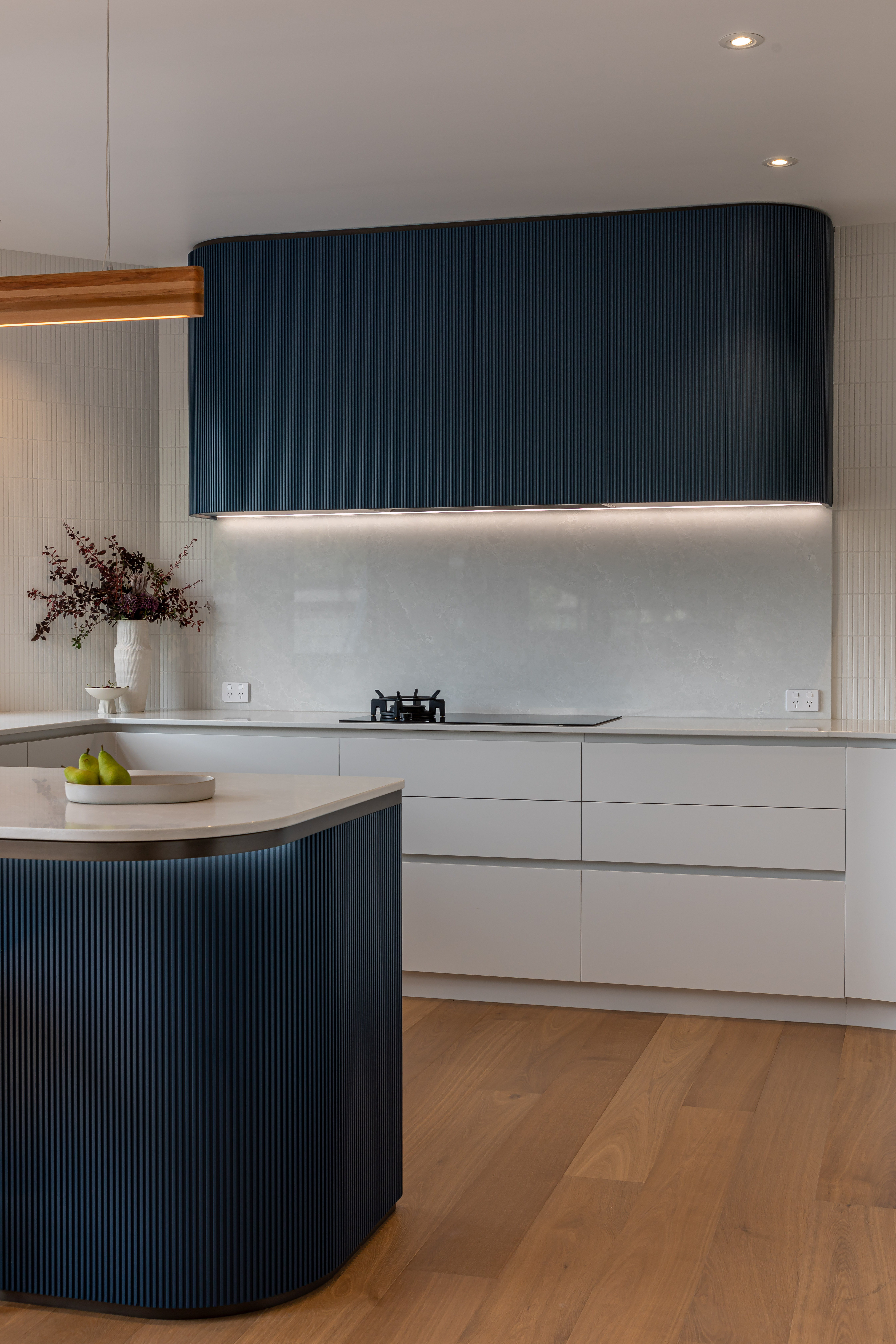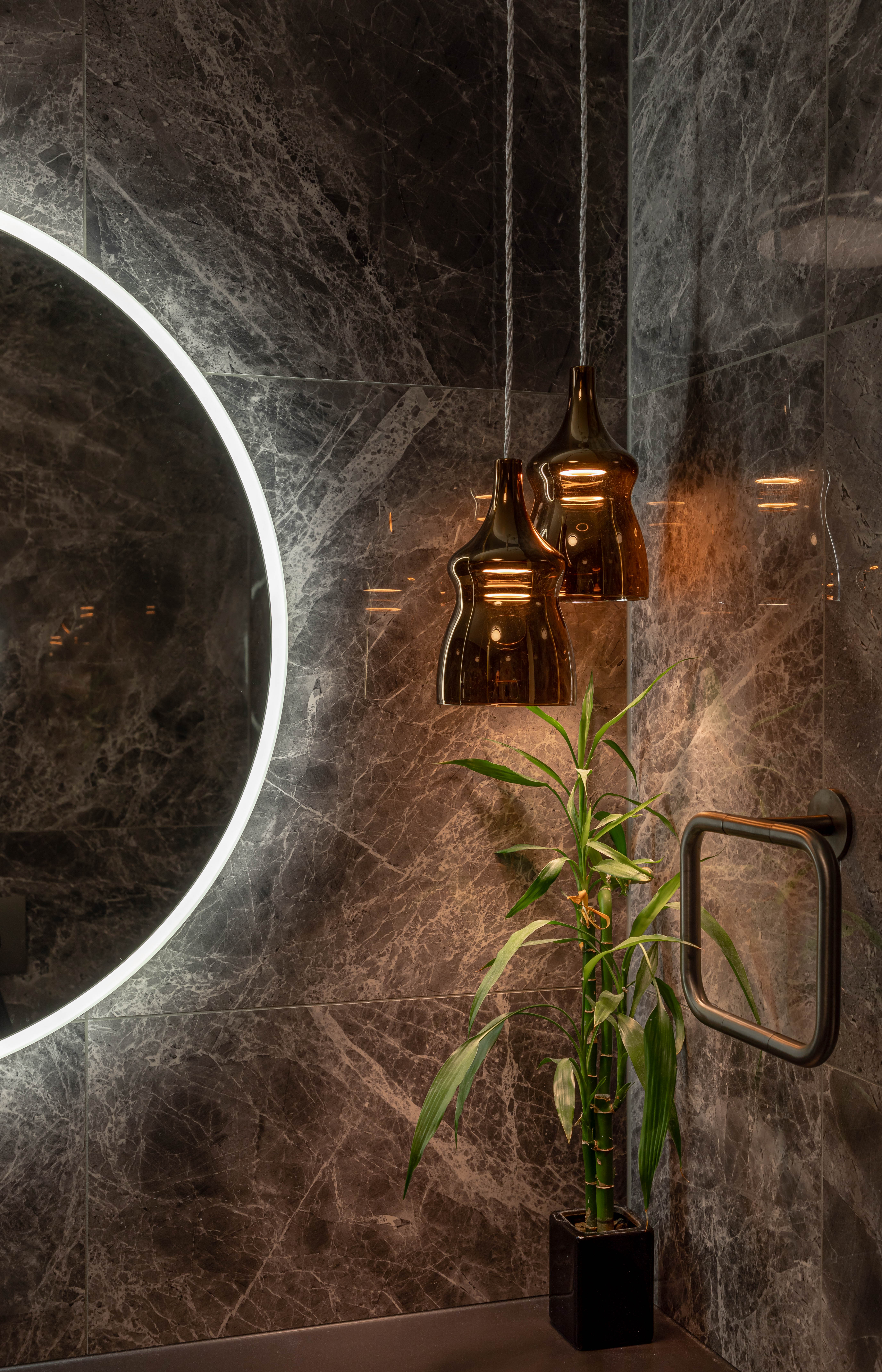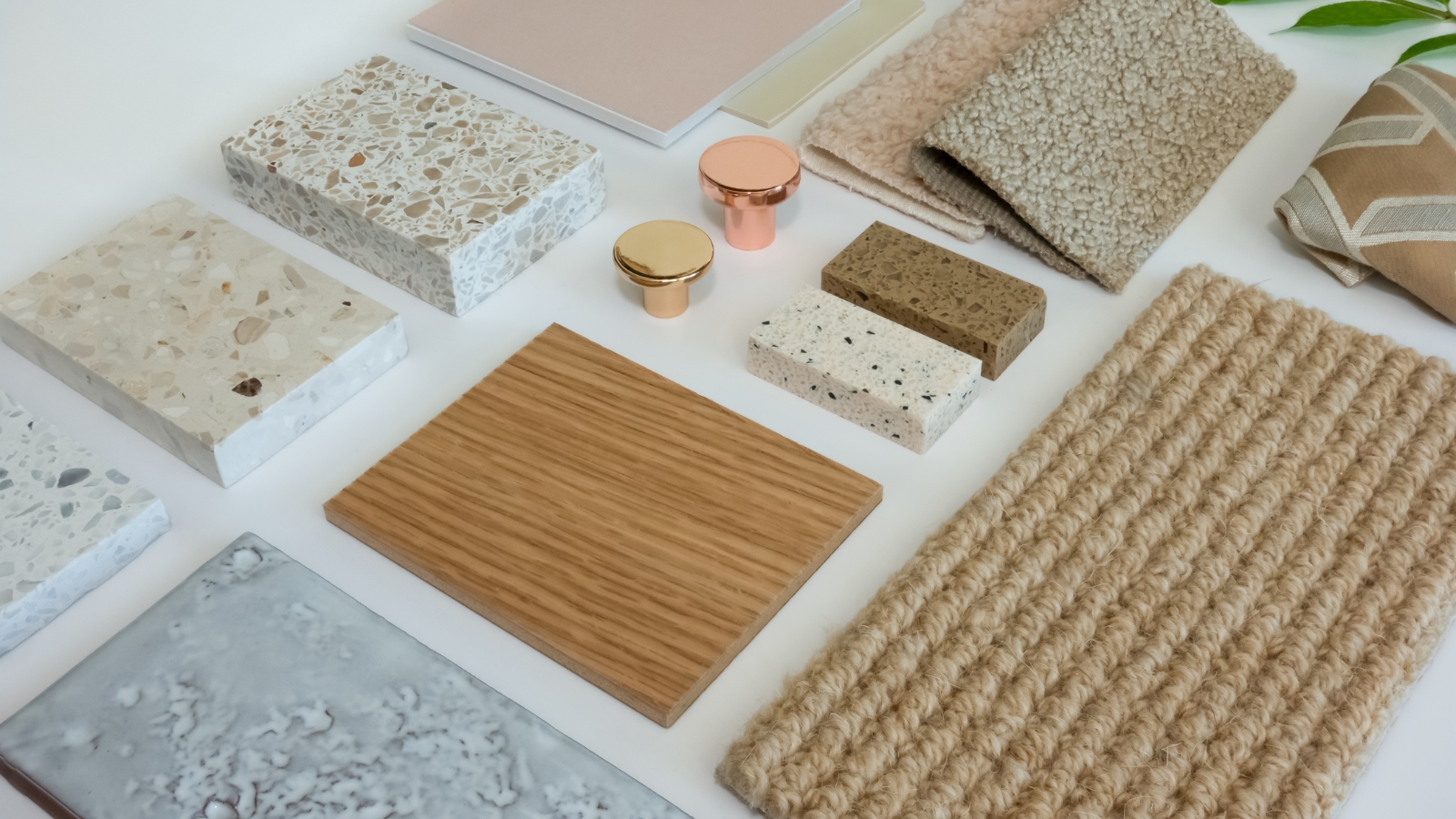Feature article
Lighting plan considerations for beautiful rooms
Here’s how to enhance the spaces in your home with a cohesive lighting plan.

A defining feature of a well-designed home, a successful lighting scheme emerges from a process of careful consideration. Here’s how to enhance the spaces in your home with a cohesive lighting plan.
Cover image: This open-plan kitchen and living area designed by Katie Scott of Sticks + Stones Design cleverly incorporates downlights and sculptural pendants to enhance the textures and beauty of the materials. Image: John Williams
Lighting for open-plan living and kitchen spaces
Open-plan living requires a specific approach to lighting that nonetheless leaves room for creative freedom.
In its ability to influence a person’s mood, direction of attention and sense of space, light can distinguish different zones whilst also presenting a sense of cohesion. There are three main types of lighting: ambient lighting, which is the total amount of light available in a room; task lighting, the targeted light that allows work to be carried out easily; and accent lighting which emphasises aspects of the home.
In any successful open-plan space, various types of lighting will need to be considered. In the open-plan space pictured above, designed by Sticks + Stones Design, a sculptural pendant hangs over the dining table, while above the kitchen workspace, task lighting is targeted to illuminate the area. Here, the ceiling is a feature itself, its textured finish picking up and reflecting light to enhance the overall aesthetic of the space.
In this Cockle Bay kitchen, designed by MS Studio, a symphony of curves and angles is accentuated by a multi-faceted lighting plan. Image: John Williams
As an open-plan kitchen captures food preparation, dining and entertaining, a kitchen lighting plan should be very thorough.
Recessed lighting can often serve to increase the sense of space, while pendants present an attractive lighting option. Correctly-hung pendants have clearance over kitchen amenities, allow sightlines to remain open and don't obstruct the people using the space.
In the evening, plinth and internal-cupboard lighting allow the kitchen to be navigated with ease. Under-cabinet lighting – activated by a sensor for convenience – can also aid movement through the space.
This lighting plan for a Remuera bathroom designed by Yellowfox creates a decidedly moody, ambient space. Image: John Williams
Designing the perfect bathroom lighting plan
Bathrooms are spaces where lighting can be moody, immersive and calming. However, task lighting is also an important consideration.
In the bathroom pictured above, hanging pendants illuminate the beauty of the wall tiles, while a backlit mirror provides ample task lighting – its circularity offers a juxtaposition to the linear lay of the tiles. Wall sconces are also frequently used in bathroom lighting plans as are LED lights for even illumination. Aesthetically, bathroom lights range from minimal to extravagant, reflective to matte.
Ambient illumination: Using accent lighting for living spaces
A living room lighting plan should establish a relaxing ambience whilst enabling activities that require bright, focused light. Dimmable task lights such as floor and table lamps create an intimate evening environment when a centralised ceiling light is switched off. Fitted onto shelves, LED strip lights illuminate objects on display. Other forms of accent lighting include uplights and downlights, with the latter highlighting features such as fireplaces when they are not in use.
Author
Other articles you might like








